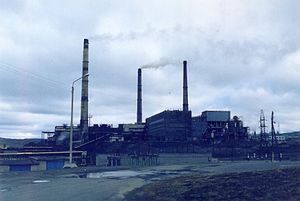Arctic wastewater dump near Russia's Norilsk was toxic, says Greenpeace
Water samples taken by Greenpeace in Russia's Arctic at the site of a wastewater dump by mining giant Norilsk Nickel contained 50 times the permitted level of toxic substances, the environmental campaign group said on Wednesday.

- Country:
- Russian Federation
Water samples taken by Greenpeace in Russia's Arctic at the site of a wastewater dump by mining giant Norilsk Nickel contained 50 times the permitted level of toxic substances, the environmental campaign group said on Wednesday. The miner admitted last month its Talnakh metals processing plant had used pumps to dump industrial water near the city of Norilsk on June 28 and said it had fired several of the plant's managers after learning of the incident.
Greenpeace, which discovered the dump with newspaper Novaya Gazeta when it was investigating the damage caused by a huge diesel fuel spill by a Norilsk Nickel subsidiary in late May, has said the wastewater flowed into a local river. The miner has said, citing its own water samples, that the incident should have no material impact on the environment and the Kharaelakh river.
On Wednesday, Greenpeace said samples taken at the site contained 50 times the permitted level of anionic surfactants that, it said, can make water uninhabitable for animals and plants. They also contained elevated iron content, it added. Nornickel, as the group is known, said it was examining Greenpeace's findings, but referred Reuters to its earlier statement about the incident.
Greenpeace said it took several water samples from sites near Norilsk, an industrial city above the Arctic Circle, in June and had them tested by a St Petersburg laboratory after travelling to the city to assess the ecological damage from the diesel spill. Norilsk Nickel has been accused of covering up the scale of the spill. Green campaigners and a former environmental official allege the fuel reached a lake and a river that feeds into the Arctic Ocean. Nornickel denies that.
Some of the water samples contained oil products, but nothing beyond permitted levels, Greenpeace said. "Oil product pollution was not detected in most of the samples, but this does not mean the consequences of the accident for Pyasina River and Lake Pyasino have been eliminated," it said.
(This story has not been edited by Devdiscourse staff and is auto-generated from a syndicated feed.)










